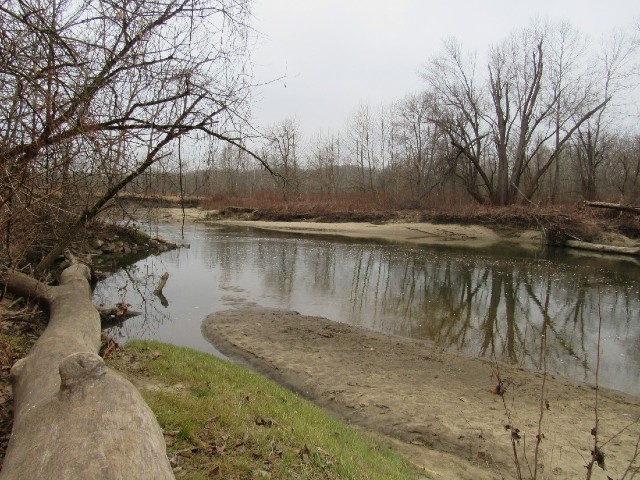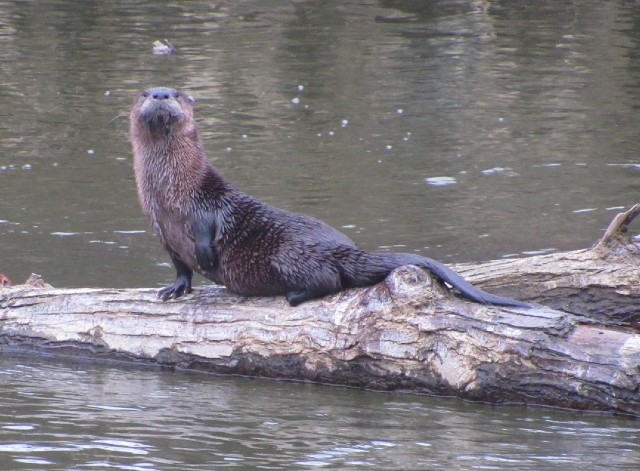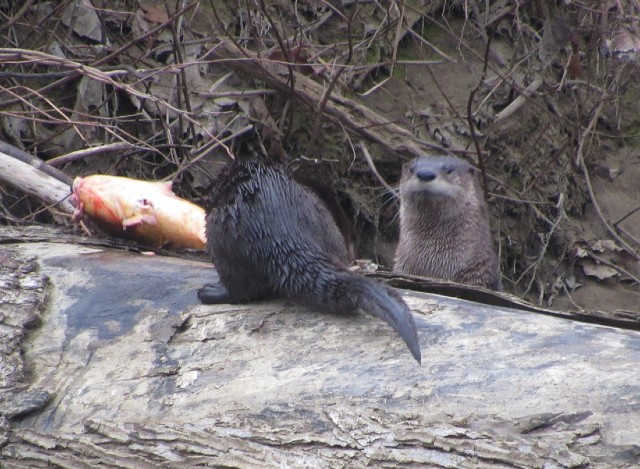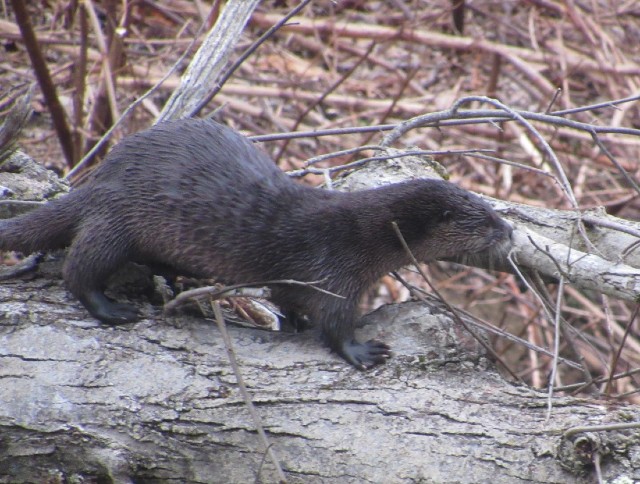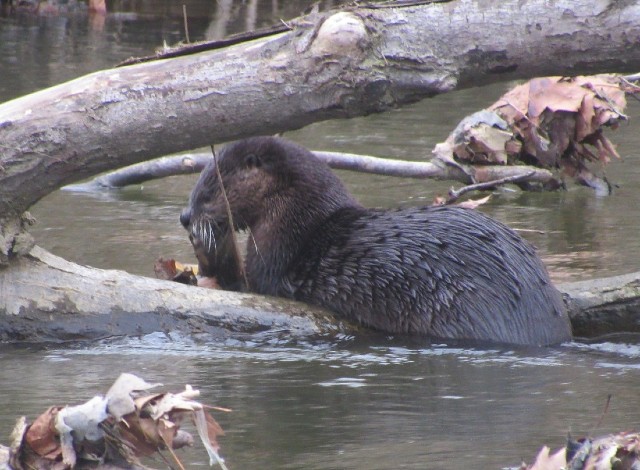As I was hiking the Ohio & Erie Canal Towpath this week, I noticed some movement in the water in the Cuyahoga River. Once I got a good look at them and made a positive identification, I was pleasantly surprised to be observing my first wild North American River Otters.
North American River Otters are native to Ohio, but in the early 1900s they were extirpated from the state due to poor water quality. Throughout the twentieth century, Ohio waterways started to bounce back and in 1986 the Division of Wildlife decided to reintroduce otters to the state.
These mammals are built for swimming. They have an excellent cardiovascular and respiratory system that allows them to stay under water for up to 4 minutes at a time. They can also close their ears and nostrils to keep water out and have a clear third eyelid, called a nictitating membrane that protects their eyes while under water.
A North American River Otter’s diet consists of mainly fish, but they will also eat various reptile and amphibian species as well as small mammals and birds. I got to see these animals eating their prey, which in this case was a European Carp.
These animals are often seen in family groups in the Summer and early Fall. They are generally nocturnal or crepuscular (active at dawn or dusk), although daytime activity is not uncommon in undisturbed areas. They are known for being playful and I saw one rolling around in the sand, seeming to enjoy himself.
A member of the Weasel Family, this is a stocky animal weighing 11 to 33 pounds, with short legs, a muscular neck and an elongated body. It has long whiskers that are used to detect prey in dark water. Its body length ranges from 26 to 42 inches.
It was awesome to observe these animals in the wild and to witness their natural behavior.

